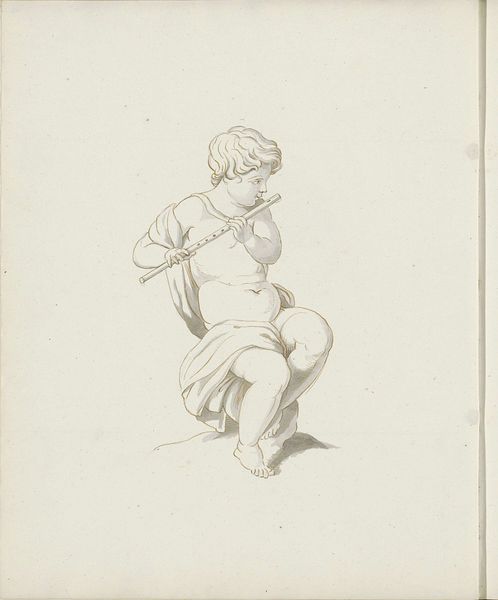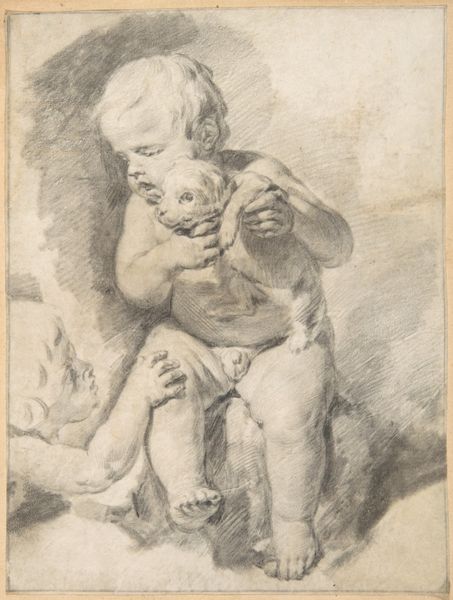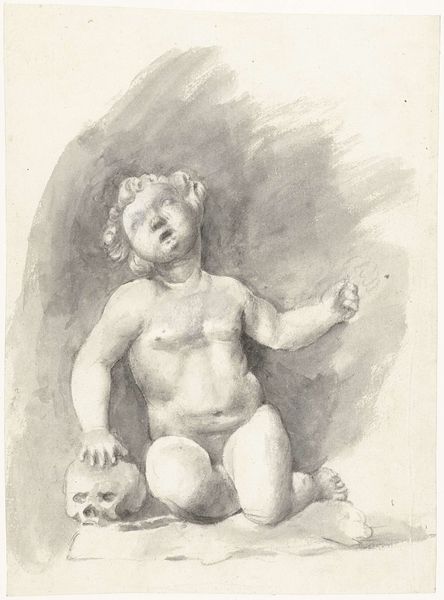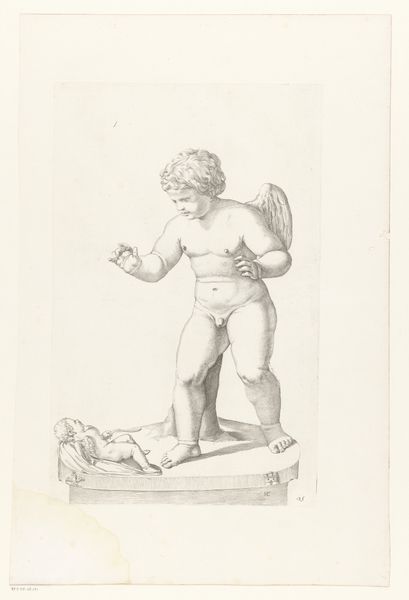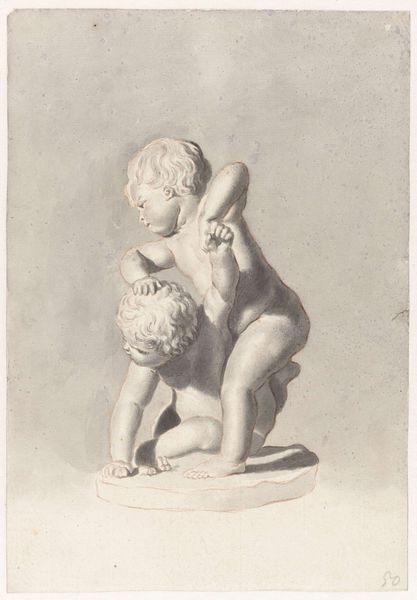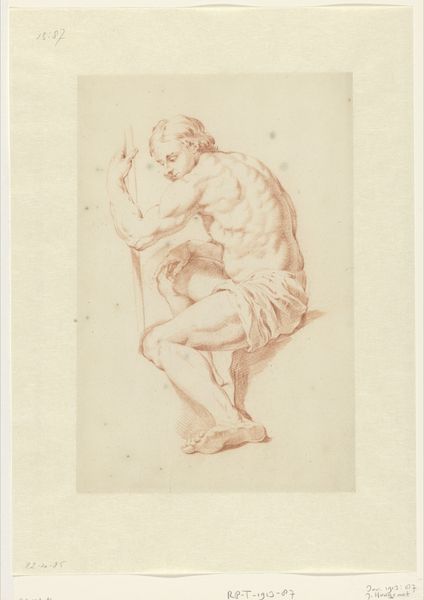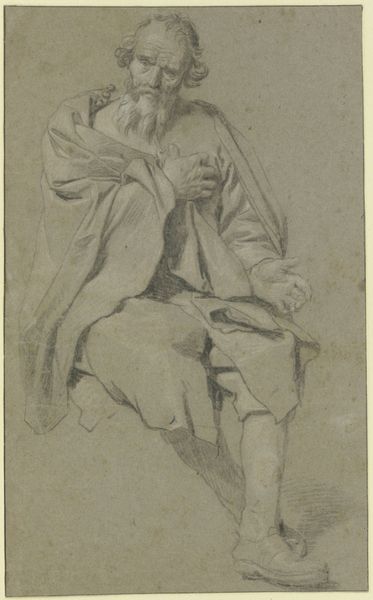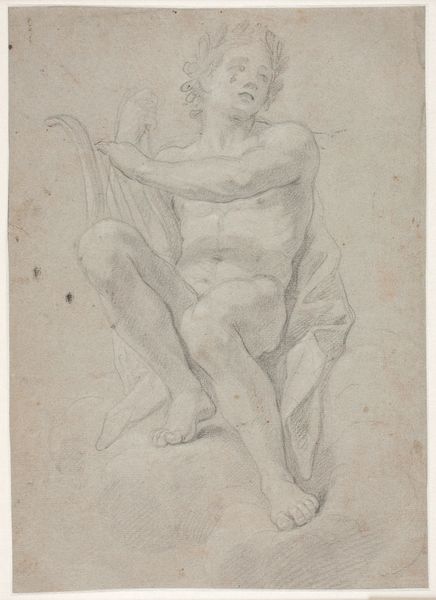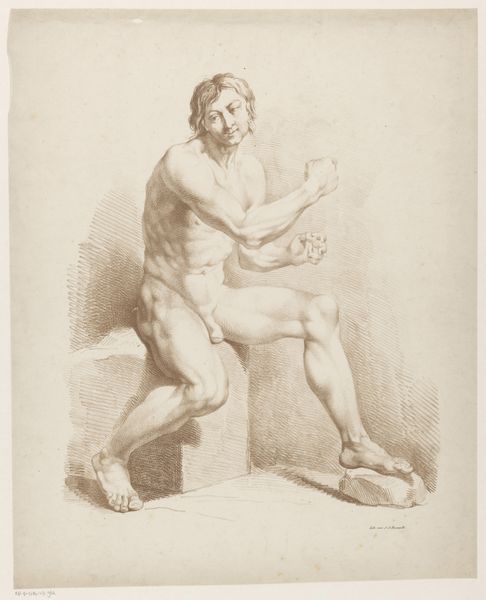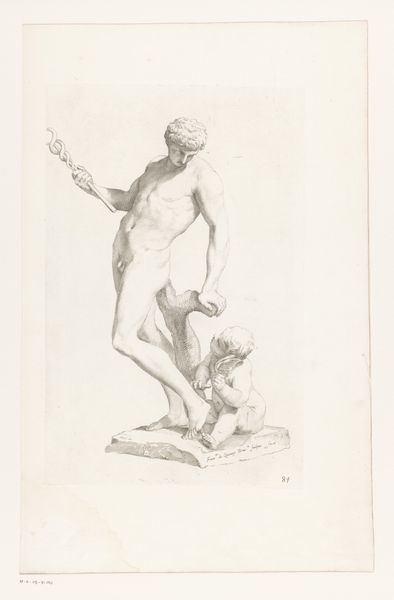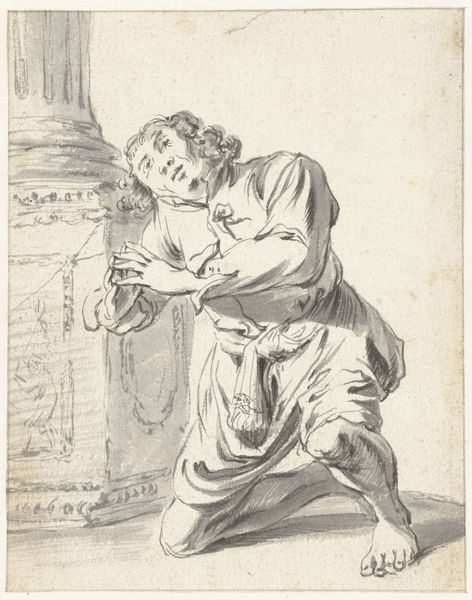
drawing, pencil
#
pencil drawn
#
drawing
#
pencil sketch
#
charcoal drawing
#
figuration
#
11_renaissance
#
pencil drawing
#
pencil
#
pencil work
#
history-painting
#
academic-art
#
nude
Dimensions: height 560 mm, width 320 mm
Copyright: Rijks Museum: Open Domain
Curator: My eye is immediately drawn to the quiet observation in this drawing. The texture! Editor: Absolutely. Let's take a closer look at Cornelis Joseph d' Heur's "Plaster Study of a Seated Nude Child," which historians believe was created sometime between 1717 and 1762. The artist worked primarily with pencil to render what looks like a figure study of a chubby cherubic child. Curator: There's such gentleness in the shading, and in the way the artist captures the soft curves of the child's body. I love how the light seems to pool on the shoulder and knees. It makes the child appear so solid, yet ethereal all at once. Editor: Indeed, and that combination is critical to understanding the work within its period. Artistic academies and ateliers often had students copy plaster casts of classical sculptures as part of their training. D’ Heur’s sketch is most likely just such an academic exercise. The “nude” of course evokes classical ideals of beauty and harmony while it invites us to consider how bodies, even very young ones, have historically been subjected to intense artistic and societal scrutiny. Curator: Hmm... that does bring a layer of complexity. I can’t help but still focus on the art-making aspect; on the artist's sheer joy of capturing form with light and shadow, almost reverentially rendering this plump little model! Editor: Well, to me the act of sketching and the male gaze throughout art history are entwined. Who is afforded visibility? Who is being represented, and for what purpose? What kind of cultural conditioning does the image promote, especially as its origins seem academic? Curator: Perhaps. Though the sketch feels remarkably innocent, almost tender... it evokes the carefree curiosity of childhood. Editor: But that reading may sanitize its own complicity with a longer, and perhaps more insidious, tradition. Curator: True! Now I have much more to ponder; I see the artwork now more vividly through a new, reflective lens. Editor: Precisely. It's about acknowledging those layered histories. The drawing now holds even more intrigue, I think, don’t you?
Comments
No comments
Be the first to comment and join the conversation on the ultimate creative platform.
